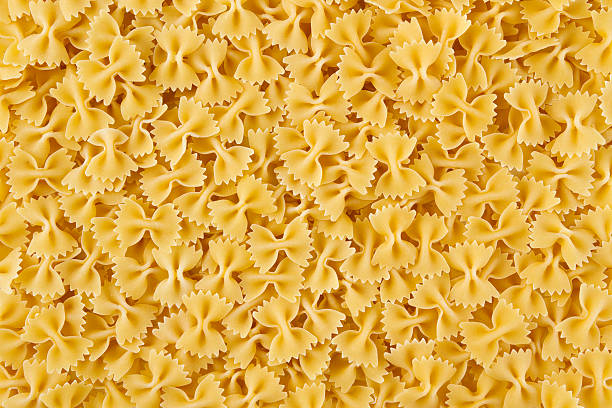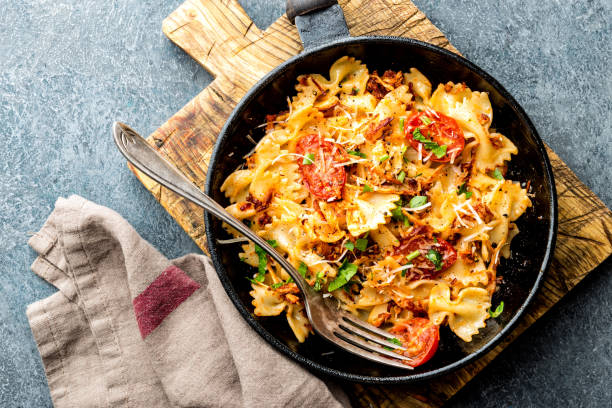Farfalle

Farfalle pasta draws its name from the Italian word Farfalla, which means "butterflies". Because of its distinctive form, which mimics butterflies and bow ties, the pasta is also known as bow-tie pasta. Farfalle developed in the northern Italian areas of Lombardy and Emilia-Romagna, which are known for producing pasta with fillings within. As a result, farfalle is said to be an unintentional by-product of loaded pasta.
According to The Pasta Project, sixth-century housewives used to prepare packed pasta and then transform the excess dough into butterfly-shaped farfalle, also known as strichetti in the region. Because of its appealing form, leftover dough pasta grew so popular that it was recognized as a distinct sort of pasta in its own right. Farfalle, made from durum wheat, holds its form exceptionally well and is thus a wonderful pasta alternative for baked casseroles as well as luscious tomato and cream-based recipes. Farfalle may also be used to spice up otherwise dull salads!



















